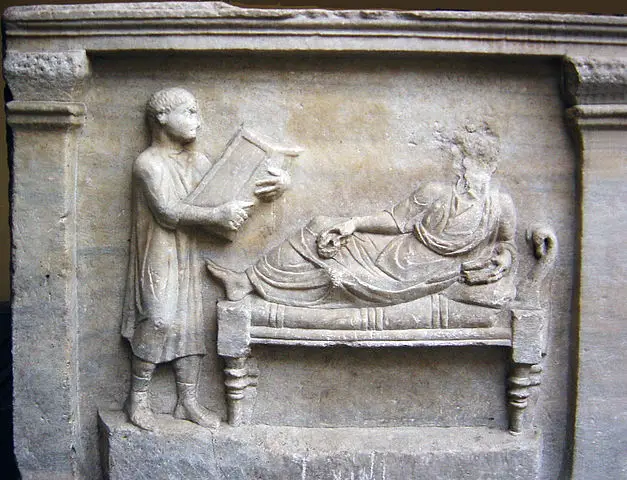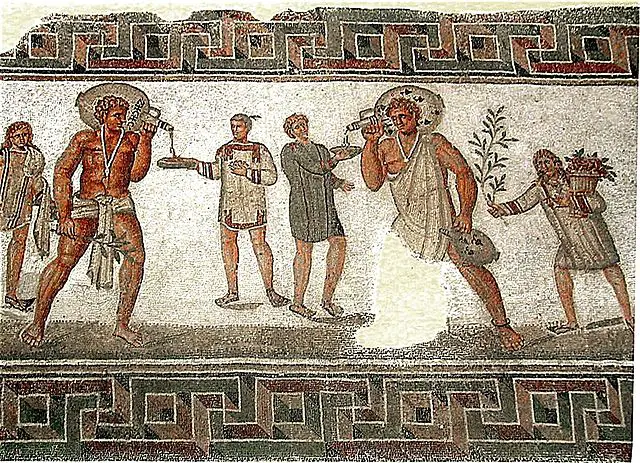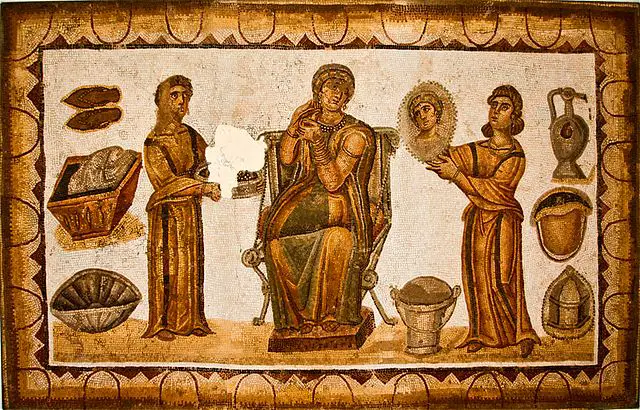Due to the very old age of the ancient Roman civilization, it was very common for many civilizations at that time to own slaves, which became large parts of the culture. Slaves were used for the performance of hard labor jobs, which helped build and run the Empire of Rome.

Historians that study ancient Rome believe there might have been as many as 20 or 30 percent of the population in slavery. In the very beginning of the Roman Empire, it was likely that at least a third (33%) were slaves, due to the labor force needed to build the cities.
Many of these slaves were people that were captured as prisoners of war from the Roman conquerors. The more the Roman Empire conquered new lands, the more people from the losing civilizations were captured and forced to become slaves for Rome.
Some of the slaves, however, were transferred into Rome from other places. In these instances it is likely that they were captured by pirates and slave traders who sold them to the Romans for profit.

Additionally, the children of slaves unfortunately grew up to become slaves, some people who were found to be criminals were forced into slavery, and sometimes people even allowed themselves to be put into slavery in order to get rid of their debts.
Slaves performed many different jobs in ancient Rome, including farming labor or mining. Depending on the education level of the person that was being forced into slavery, however, some of them might have become teachers or business counselors.
Slaves in ancient Rome could be owned by either a private family or a single individual, or they could be publicly owned by the government. Government owned public slaves were usually put to the job of building and maintaining government buildings. Private slaves worked in the home.

Treatment of each slave was dependent upon who owned him or her. Some of the slaves, particularly the ones that lived and worked in someone’s family home, might have been treated like a member of the family.
Historians suggest that ancient Romans understood that, even though they considered their slaves property, they were still valuable and were treated acceptably. Some slaves might have even been paid for their work by certain owners.
However, as is the nature of slavery in general, many slaves were treated very poorly, including regular beatings and being worked to death. In fact, there were instances of rebellions that were organized by the slaves in attempt to break free from their servitude.
These slave rebellions were known as the Servile Wars, of which there were at least three. The most famous one was the third Servile War, led by the notorious gladiator Spartacus.
Sometimes slaves would be set free or earn the ability to buy or fight their way to freedom. Even in those cases, however, freed slaves were not treated as well as natural citizens of Rome that had not served any time as slaves.
It was also against the law in Rome to help slaves that had run away from their captors or owners. Running away would typically lead to the murder of that slave.
Questions:
- What jobs were slaves primarily used for?
- What percentage of the Roman population might have been slaves?
- What was the difference between private and publically owned slaves?
- What were the slave rebellions called?
- Who led the third Servile War?
Answers:
- Slaves were primarily used for hard labor jobs.
- Slaves might have been 20-30% of the Roman population.
- Private slaves worked for individuals or families, and public slaves worked for the government.
- The slave rebellions were called Servile Wars.
- The third Servile War was led by the gladiator Spartacus.